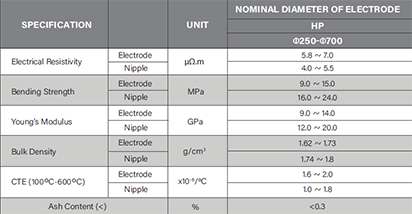

Graphite electrode is a critical component in the manufacturing of electric arc furnace steel and other industrial/civil sectors. It is made of high-purity graphite material, possessing excellent conductivity and high-temperature stability, capable of withstanding high-intensity currents and high-temperature environments. SANGRAF produces two components that make up a complete graphite electrode: the graphite electrode body and the joint.
The ultra-high power graphite electrode produced by Sanergy Group is an indispensable conductor and thermal material in green steelmaking with arc furnaces, surpassing blast furnace steelmaking in environmental protection and energy conservation. It represents the primary direction for energy conservation and emission reduction in the global steel industry.
Graphite electrodes have a long history of more than 100 years. Graphite is a unique material with no known substitutes in the steelmaking process.
Graphite has the characteristics of high temperature resistance, high thermal conductivity, low resistance and high strength at high temperatures.






Sustained commitment to green production processes to reduce emissions and waste, decrease energy consumption, and enhance efficiency
Improving production efficiency and optimizing production capacity by eliminating bottlenecks in various production processes
Deepening business cooperation with existing customers and continuously reaching out to new potential customers to expand business scale and increase market share
Strategically allocating sales to electrode-deficient regions to meet the diverse needs of customers in different areas
Strategically adjusting inventory management and procurement policies to strictly control the inventory levels of raw materials and procurement costs

The production process includes mixing, extrusion, baking, impregnation, re-baking, graphitization, and machining. The primary raw materials for producing graphite electrodes are petroleum coke and needle coke. Manufacturers use different proportions of these two materials to produce graphite electrodes of varying qualities. Continuous improvements in energy efficiency and emission reduction during the production process of graphite electrodes, such as refining baking and graphitization processes, can further reduce energy consumption and emissions during production.
Strategic positioning in both Europe and China, two key trade corridor hubs, enables the provision of localized services to global customers
